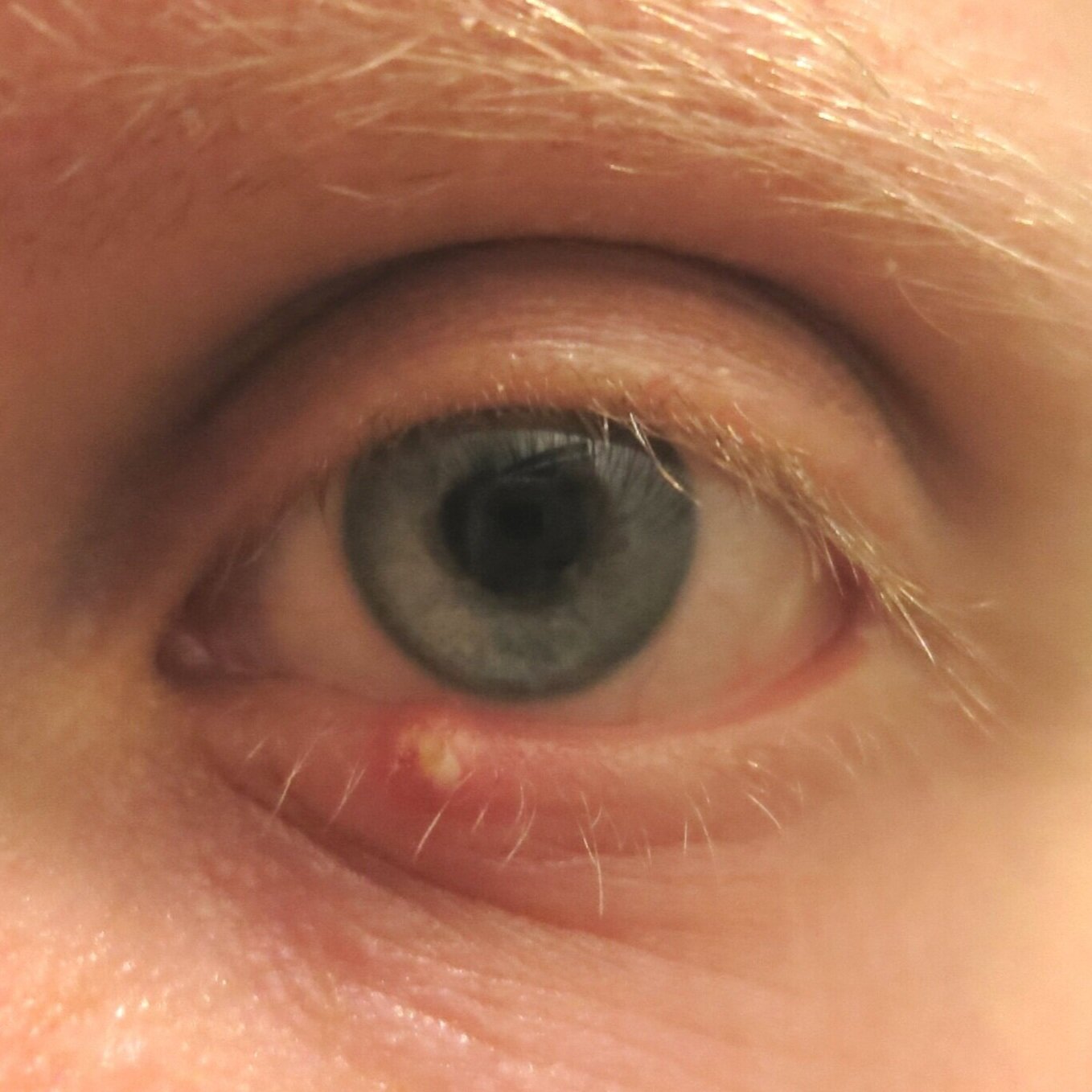
What is a Stye?
Hordeolum and Chalazion
A “bump” on the eyelid
What is a Stye?
A stye is a colloquial term for a hordeolum or a chalazion. This is a bump on the eyelid that is caused by a clogged oil gland, due to blepharitis. These oil glands, called meibomian glands, are located near the base of the eyelashes and typically secrete oil to lubricate the surface of the eye.
A Hordeolum is an actively inflamed, clogged meibomian gland. A hordeolum is typically red, swollen, painful to touch, and can develop over the course of days. Sometimes, a hordeolum can also develop from a clogged apocrine sweat gland on the skin of the eyelid; this is often referred to as a hordeolum externum.
A Chalazion is an obstructed meibomian gland without inflammation, and possibly scarring. These may often develop from a hordeolum, or they may develop slowly on their own. They are typically hard, not painful to touch, and can sometimes last months to years.
It is possible for a hordeolum or a chalazion to worsen, grow/enlarge over time, recur. Rarely, a chalazion or hordeolum may result in a localized bacterial skin infection, called cellulitis. If this occurs, the entire eyelid may become red and swollen, and this warrants a visit to an ophthalmologist, and possibly treatment with systemic antibiotics (Typically a seven day course of antibiotic pills).
How do I get rid of a stye?
Medical Therapy
Treatment for a stye involves using warm compresses, with the goal of the heat from the warm compress to allow the oil to become more fluid, to unclog the blocked gland.
Your doctor may prescribe eyedrops and/or pills to aid in unclogging the blocked gland. Your doctor may also use a special instrument in the office to squeeze the eyelid, in order to help unclog the gland.
Procedures to remove a stye
Steroid Injection
Your ophthalmologist injects a small amount of steroid into the stye. This causes the stye to slowly decrease in size over 30 days.
Incision and Drainage
Your ophthalmologist may recommend surgical removal of a chalazion. Depending on the size and location of the chalazion, your ophthalmologist will use a scalpel to made a small cut either on the skin on the underside of the eyelid, or on the outside of the eyelid. The contents of the chalazion are then cut out and removed.
What are the complications of a stye?
Very rarely, the bacteria in a hordeolum or stye may spread to the neighboring skin, resulting in a local skin infection, called cellulitis. This may affect the entire eyelid and/or surrounding skin. A cellulitis infection warrants treatment with systemic antibiotics (pills). If you develop a cellulitis infection, call your ophthalmologist immediately.

Schedule an eye exam today



